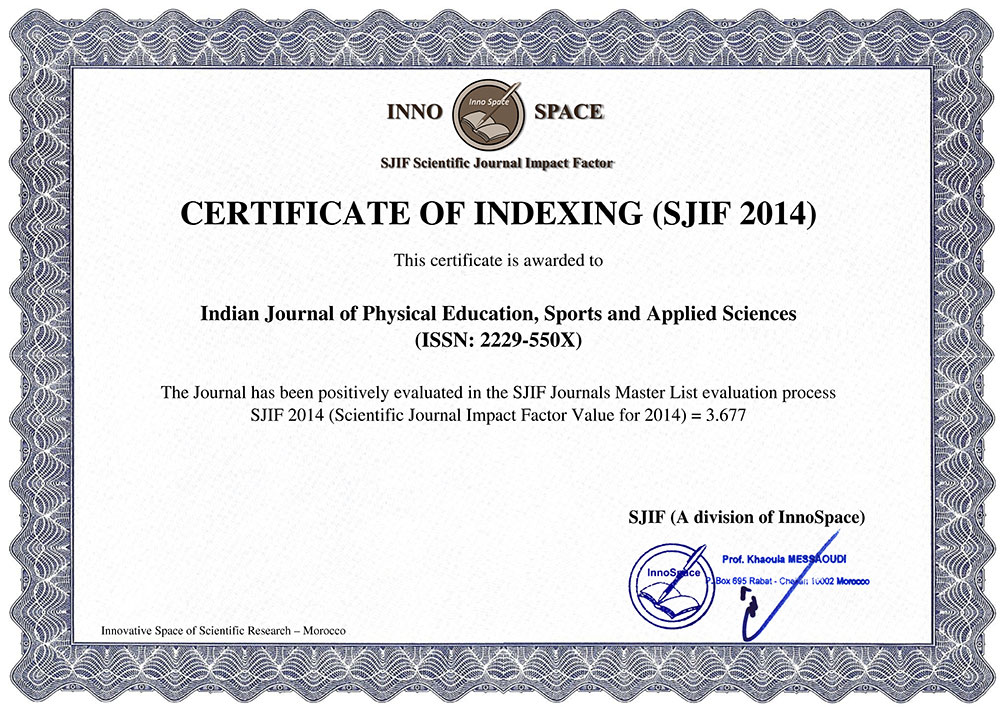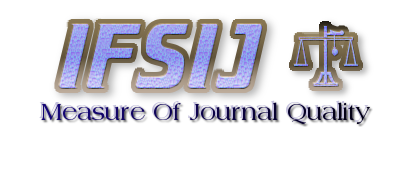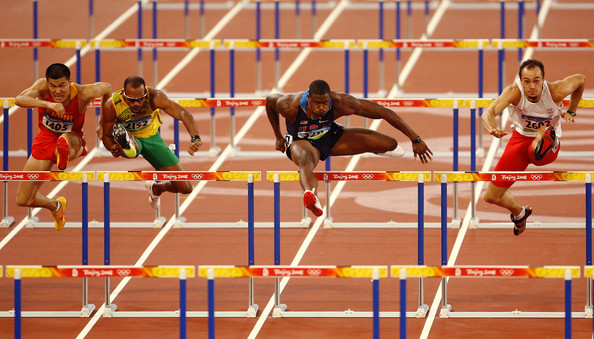EFFECT OF CIRCUIT TRAINING AND ENDURANCE TRAINING ON SELECTED VARIABLES OF SCHOOL OBESE BOYS
Volume 7-Number 1, January, 2017 February 12, 2017| Author name : | Kandasamy Kuganesan & Dr. (Mrs) Bhavani Ahilan | ||||
|---|---|---|---|---|---|
| Page no : | 01-12 | Volume : | 7 | Issue : | 1 |
doi no.: 02.2017-77725971; DOI Link :: http://doi-ds.org/doilink/02.2017-77725971/
Kandasamy Kuganesan1 , Dr. (Mrs) Bhavani Ahilan2
Affiliations:
1Physical Education Teacher, Jaffna Central College, Sri Lanka
2Senior Lecturer, Sports Science Unit, University of Jaffna, Sri Lanka
ABSTRACT
The purpose of the study was to examine the effect of circuit and endurance training on selected variables of school obese boys. To achieve this study, the investigator has randomly assigned ninety (N=90) obese school students, age range of the students were between 16 and18. They were equally divided into three groups such as Endurance Training (ET), Circuit Training (CT) &Control Group (CG) and recruited subjects have undergone 12 weeks of ET & CT. Cycling was considered as Endurance Training and Circuit Training consisted resistance and aerobic training. Control group does not engage any kind of physical activity during this study. Pre test and post test data’s were collected from following variables such as Resting Heart Rate (RHR), Body Mass Index (BMI), High Density Lipoprotein (HDL), and VO2max. T test was administered to find out the significant differences between pre test and post test. ET group had significant differences on all the variables and CT group also had significant differences excepted HDL but Control group does not have any significant level so further ANOVA was used to find out the significant on each variables among groups. There, each variable had significant level of differences among groups. It revealed that ET group had significant level of improvement on RHR, HDL and VO2max compared to CT and CG but BMI level showed significant level of improvement in ET and CT compare to CG therefore they can consider the endurance training an appropriate and non medication training package to prevent the cardiovascular disease and obesity related disease.
Keywords- Circuit Training, Endurance Training, RHR, BMI, HDL, VO2max
DOWNLOAD FULL TEXT: 
BIBLIOGRAPHY
Bandyopadhyay, A., and Chatterjee, S. “Body composition, morphological characteristics and their relationship with cardio-respiratory fitness”. Ergonomis SA, 1 (2003):19–27.
Boden, W.E. ” High-density lipoprotein cholesterol as an independent risk factor in cardiovascular disease: assessing the data from Framingham to the Veterans Affairs High-Density Lipoprotein Intervention Trial”. Am. J. Cardiol. 86:12A (2000):19L- 22L.
Broeder, C. E., Burrhus, K. A., Svanevik, L. S., and Wilmore, J. H. “The effects of either high-intensity resistance or endurance training on resting metabolic rate”. American Journal of Clinical Nutrition. 55 (1992): 802-810.
Carroll, M.D., Kit, B.K., and Lacher, D.A. “Total and high-density lipoprotein cholesterol in adults. National Health and Nutrition”. Examination Survey . 92(2009-2010): 1-8.
Chapman, M.J. “Therapeutic elevatio of HDL-cholesterol to prevent atherosclerosis and coronary heart disease”. Pharmacol Ther. 111 (2006): 893-908. 6.
Chatterjee, S., Chatterjee, P., Bandyopadhyay, A.”Cardiorespiratory fitness of obese boys”. Indian J Physiol Pharmacol. 49 (2005): 353-357.
Colditz, G. A., Willett, W. C., and Stampfer, M. J. et al. “Weight as a risk factor for clinical diabetes in women”. Am J Epidemiol, 132(1990):501–513.
Dashti M.H. “The effect of programmed exercise on body compositions and heart rate of 11-13 years-old male students”. Zahedan Journal of Research in Medical Sciences. 13 :6 (2011):40-3.
Després, J.P., Pouliot, M.C., Moorjani, S., Nadeau, A., Tremblay, A., Lupien, P.J., Theriault,G., and Bouchard, C. “Loss of abdominal fat and metabolic response to exercise training in obese women”. Am J Physiol, 261 (1991):159–167.
Deurenberg P, Deurenberg-Yap M, and Guricci S.” Asians are different from Caucasians and from each other in their body mass index/body fat percent relationship”. Obes Rev. 3 (2002):141-6
Durrington P. and Dyslipidaemia. Lancet; 362: (2003): 717-31.Durstine, J.L. and Haskell, W.L “Effects of exercise training on plasma lipids and lipoproteins”. Exerc Sport Sci Rev. 22 (1994):477–521.
Elliott K.J., Sale C. and Cable N.T. “Effects of resistance training and detraining on muscle strength and blood lipid profiles in postmenopausal women”. British journal of sports medicine. 36(5): 2002:340-4.
Erikssen, G.. “Physical fitness and changes in mortality: the survival of the fittest”. Sports Med.31 (2001):571-6.
Gibala, M.J., Little, J.P., and Essen, M.V, et al. “Short-term sprint interval versus traditional endurance training: similar initial adaptations in human skeletal muscle and exercise performance”. J Physiol 575:3)(2006):901Y11.
Gielen S, Schuler G, Hambrecht R.. “Exercise training in coronary artery disease and coronary vasomotion” . Circulation, 103 (2001): E1–E6.
Global Health observatory (GHO). “Obesity situation and trends”. World health organization. (2012).
Greenland, P., Daviglus, M.L., Dyer, A.R., Liu, K., Huang, C.F., and Goldberger, J.J, et al. “Resting heart rate is a risk factor for cardiovascular and noncardiovascular mortality”. Am J Epidemiol. 149 (1999):853-62.
Hardman, A.E. “Physical activity, obesity and blood lipids”. Int J Obes. 23:suppl 3 (1999) :S64–S71.
Haskell, W. L.. “The influence of exercise on the concentrations of triglyceride and cholesterol in human plasma” . Exercise and Sport Sciences Reviews. 12 (1984): 205-244.
Heyward, V . Advance Fitness Assessment & Exercise Prescription, 3rd Ed, 1998, p. 48.
Iaia, F.M., Hellsten, Y.J., Nielsen, J.M. and Sahlin, K.B. “Four weeks of speed endurance training reduces energy expenditure during exercise and maintains muscle oxidative capacity despite a reduction in training volume”. J Appl Physiol. 106 (2009): 73–80.
Institute of Medicine of the National Academies. Preventing Childhood Obesity. Health in the Balance. Washington : D. C. The National Academies Press., 2005.
Jones, R.L., and Nzekwu, M .U. “The effects of body mass index on lung volumes”. Chest 130:3(2006):827-33.
Jump up Guyton, A. and Hall, J.E. Textbook of Medical Physiology, 12th Ed. (2011):1035–1036.
Kaplan, N.M. “The deadly quartet. Upper-body obesity, glucose intolerance, hypertriglyceridemia, and hypertension”. Arch Intern Med.149:7 (1989):1514–1520.
Kelley, G.A. and Kelley, K.S. “Impact of progressive resistance training on lipids and lipoproteins in adults: A meta-analysis of randomized controlled trials”. Preventive Medicine. 48 (2009): 9-19.
Kokkinos, P.F.,Holland, J.C.,Narayan, P.,Colleran, J.A.,Dotson, C.O. and Papademetriou, V. “Miles run per week and high-density lipoprotein cholesterol levels in healthy, middle-aged men: a dose-response relationship”. Arch Intern Med ,155 (1995):415- 420.
Kokkinos, P.F., Hurley, B.F., and Smutok, M.A., et al. “Strength training does not improve lipoprotein-lipid profiles in men at risk for CHD”. Med Sci Sports Exerc.23:10(1991): 1134–1139.
Kwon, H. R., Han, K. A., Ku, Y. H., Ahn, H. J., Koo, B. K., Kim, H. C., and Min, K. W. “The effects of resistance training on muscle and body fat mass and muscle strength in type 2 diabetic women” . Korean Diabetes Journal. 34 (2010):100-110.
Matton L., Duvigneeaud N., Wijndaele K ., Philippaerts R ., Duquet W ., Beunen G ., Claessens A ., Thomis M . and Lefevre J . “Secular trends in anthropometric characteristics, physical fitness, physical activity and biological maturation in Flemish adolescents between 1969 and 2005” . Am J Hum Biol 19(2007) : 326 – 624
Moro C., Pillard F. and De Glisezinski I et al. “Training enhances ANP lipid-mobilizing action in adipose tissue of overweight men”. Med Sci Sports Exerc. 37 (2005): 1126-32.
Mosca L., Rubenfire M. and Tarshis T et al. “Clinical predictors of oxidized low-density lipoprotein in patients with coronary artery disease”. Am J Cardiol. 80 (1997): 825-30.
Murphy, E. and Schwarzkopf, R. “Effects of standard set and circuit weight training on excess post-exercise oxygen consumption”. J Strength Cond Res. 6:2 (1992):66Y124.
Nevill, A.M., Ramsbottom, R. and Williams, C. S. “Physiological measurements for individuals of different body size”. Eur. J. Appl. Physiol . 65 (1992): 110-117.
Nindl, B.C., Harman, E.A. and Marx J.O, et al. “Regional body composition changes in women after 6 months of periodized physical training”. J Appl Physiol. 88 (2000): 2251-9
Ogden, C.L., Carrol, L., McDowell, M.,Tabak, C., and Flegal, K.. “Prevalance of overweight and obesity in the United States, 1999-2004”. Journal of the American Medical Association 295:13 (2006):1549-1555.
Palatini, P. “Elevated heart rate: a ‘new’ cardiovascular risk factor”? Prog. Cardiovasc. Dis. 52:1 (2009): 1–5.
Palatini, P., and Julius, S. “Heart rate and the cardiovascular risk”. J Hypertens, 15:1 (1997):3–17.
Paoli, A., Pacelli, F. and Bargossi, A.M., et al. “Effects of three distinct protocols of fitness training on body composition, strength and blood lactate”. Journal of Sports Medicine and Physical Fitness. 50:1 (2010):43–51.
Perski A., Hamsten A. and Lindvall K, et al. : Heart rate correlates with severity of coronary atherosclerosis in young postinfarction patients. Am Heart J, , 116: (1988): 1369–1373.
Physical Activity Guidelines Advisory Committee. Physical Activity Guidelines Advisory Committee Report. U.S. Department of Health and Human Services, Washington, DC;( 2008).
Plasqui G. and Westerterp K.R. Accelerometry and heart rate as a measure of physical fitness: proof of concept. Med Sci Sports Exerc, , 37: (2005): 872–876.
Ricci, G.D., Lajoie, D., Petitclerc, R., Peronnet, F., Ferguson, R.J., Fournier, M., and Taylor, A.W.Left ventricular size following endurance, sprint, and strength training. MdSci Sports Exerc.14:(1982): 344–347.
Saliman, J.A., Benditt, J.O., Flum, D.R, Oelschlager, B.K., Dellinger, E.P. and Goss, C.H.Pulmonary function in the morbidly obese. SurgObesRelat Dis. 4(5):(2008):632-9.
Sallinen J., Fogelholm M., Volek J.S., Kraemer W.J., Alen M. and Häkkinen K: Effects of strength training and reduced training on functional performance and metabolic health indicators in middle-aged men. Int J Sports Med., 28: (2007): 815-22.
Santos A. , Marinho D.A. , Costa A.M., Izquierdo M ., Marques M.C. The effects of concurrent resistance and endurance training follow a specifi c detraining cycle in young school girls . J Hum Kinet :93: (2011): 103 42
Sigal R.J., Kenny G.P., Boulé N.G., Wells G.A., Prud’homme D., Fortier M., Reid R.D., Tulloch H., Coyle D., Phillips P. and Jennings, A., Jaffey JEffects of aerobic training, resistance training, or both on glycemic control in type 2 diabetes: a randomized trial. Ann Intern Med. Sep 18;147(6): (2007):357-69.
Swank, A.M., Funk, D.C., Manire, J.T., Allard, A.L., and Denny, D.M. Effect of resistance training and aerobic conditioning on muscular strength and submaximal fitness for individuals with chronic heart failure: influence of age and gender. J tr Cond Res. 24: (2010): 1298–1305.
Tambalis, K., Panagiotakos, D.B., Kavouras, S.A., and Sidossis, L.S.Responses of blood lipids to aerobic, resistance, and combined aerobic with resistance exercise training: a systematic review of current evidence. Angiology. Pub Med.60(5) :(2009):614–632.
Vanderburgh, P.M. and Katch, F.I., Ratio scaling of VO2max penalizes women with larger percent body fat, not lean body mass. Med Sci Sports Exerc. 28: (1996): 1204-1208.
Wagner, N., Meusel, D. and Kirch, W., Nutrition education for children—results and perspectives. J Public Health;13(2) : (2005):102-10.
Welsman, J.R., Armstrong, N., Nevill, A.M., Winter, E.M. and Kirby, B.J.Scaling peak VO2 for differences in body size. Med Sci Sports Exerc. 28:(1996):259-265.
Wooten, J.S., Biggerstaff, K.D. and Anderson C. Response of lipid, lipoprotein-cholesterol, and electrophoretic characteristics of lipoproteins following a single bout of aerobic exercise in women. Eur J Appl Physiol (2008).
Zerah, F., Harf, A., Perlemuter, L., Lorino, H., Lorino, A.M., and Atlan G. Effects of obesity on respiratory resistance. Chest. 103(5):(1993):1470-6







